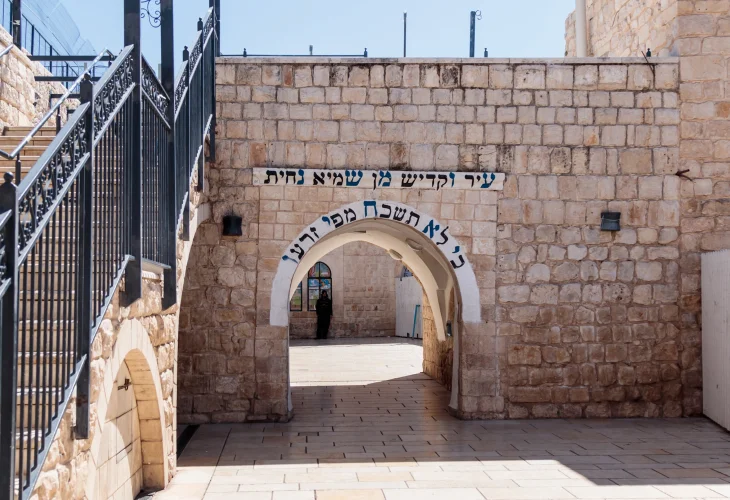History and Archaeology
The Man Behind the Stones: The Unlikely Story of the Builder of Rabbi Shimon bar Yochai’s Tomb
The Midrash Records the Cave of Rabbi Shimon bar Yochai—but the Story of the Builder of His Tomb Is One Worth Telling
 (Photo: shutterstock)
(Photo: shutterstock)Nearly all of us have visited the tomb of Rabbi Shimon bar Yochai (the Rashbi) and found solace beneath the sturdy ancient stone structure that, at times, shelters thousands of visitors. Yet have we ever paused to wonder: who built this remarkable building?
While the Midrash speaks of Rashbi’s cave, it makes no mention of a constructed edifice. The man responsible for building this structure never became a household historical figure, yet during his lifetime, his story was widely known.
There is an American television show called “Reality Hunters,” in which dealers, collectors, and adventurous buyers bid on abandoned shipping containers at busy ports. No one knows what lies inside until after the auction—sometimes nothing at all, sometimes worthless goods, and occasionally priceless treasures.
In a strikingly similar scenario, about 230 years ago—in the year 1797—a young man named Yitzhak Guita found himself in such a moment of fate.
Born in Tripoli to the distinguished Guita family, descendants of Spanish exiles, Yitzhak was not content to remain there. After completing his studies under Rabbi Moshe Lakhemiyash, a respected scholar from Tripoli, he journeyed to Livorno, Italy. There, he took work as a servant for a wealthy Jewish man named Luzzatto. By day, Yitzhak transported goods for his employer; by night, he immersed himself in Torah study. Living modestly, he managed to save a respectable sum from his wages.
One day, a messenger arrived from the Land of Israel to collect charitable donations. Moved by the cause, Yitzhak gave away his entire savings. The grateful emissary blessed him that he would one day become wealthy and support many Torah scholars.
Not long afterward, Yitzhak went to the marketplace on his master’s behalf. After unloading sacks of goods, he leaned casually against a large barrel behind him. Suddenly, he heard an announcement ring out:
“Third call—sold to the servant of Mr. Luzzatto for ten gold coins!”
To his horror, Yitzhak realized he had unknowingly been included in an auction of abandoned barrels from the port, much like those on the modern television show. Panic set in. He had nowhere near that amount of money, nor any prospect of paying it soon. But the rules were final. The barrel was delivered to his master’s basement, and the cost was deducted from Yitzhak’s wages over many long months.
When the barrel was opened, flax fibers burst into the air, revealing that it was filled with flax. Hoping to eventually sell it, Yitzhak left it untouched. One night, however, a troubling thought crossed his mind: if the barrel contained only flax, why had the porters struggled so much to carry it? Acting on instinct, he overturned the barrel—only to discover that beneath the flax lay a hidden fortune of silver and gold coins.
Yitzhak Guita became immensely wealthy, yet he never forgot his humble beginnings. He married a respectable woman and settled in Trieste, where he established a yeshiva, supported Torah scholars and the poor, and earned widespread respect. He authored several Talmudic works collectively titled Sadeh Yitzhak. In one of them, he recounts how he struggled to understand a description of a mysterious bird mentioned in Tractate Chullin—until one day, that very bird appeared outside his window, clarifying the passage before his eyes.
At the age of seventy-eight, Yitzhak did not slow down. Instead, he immigrated to the Land of Israel with his family and settled in Safed. There, he renovated the synagogue of Rabbi Yosef Karo, which had been severely damaged by an earthquake fifteen years earlier. He went on to build the Pachad Yitzhak study hall in Tiberias and, most notably, transformed the tomb of Rabbi Shimon bar Yochai in Meron—from a modest tent into a magnificent, enduring structure.
That building, which has withstood hardship, time, and multiple earthquakes, continues to stand strong to this very day.

